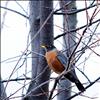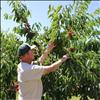Facts on chickens, eggs, avian flu in the area
Hey savvy news reader! Thanks for choosing local.
You are now reading
1 of 3 free articles.
LAKE COUNTY — With over 35 million chickens destroyed nationally, and 10% of the nation’s laying chickens gone, other than a rise in the cost of eggs at local markets, Lake County appears to have escaped the avian flu issue. Jack Stivers, currently acting as interim agent at MSU Extension in Ronan, hasn’t heard of any bird flu infections in Lake County. He’s spoken with Westland Seed and Mountain West Coop and other locals and according to them there haven’t been any real noticeable local repercussions due to the national avian flu problem. There’s been a small increase in postage for chicks, but he said, “not a terrible increase in price.” However, he explained, that it’s always possible issues and problems could still be coming.
Tahnee Szymanski from the Montana Department of Livestock concurred that so far there have been no recent detections of the bird flu in our area. The most recent cases were in Missoula in December and Flathead County in October. Szymanksi did say however, there has been a recent detection in Gallatin County making the state now as bird migration makes its way north.
Asked if there are any restrictions on chicks or eggs sold at Farmers Markets, she said there are no rules. “If in the next months the state gets hammered,” she said, emergency rules and an official order disallowing the exhibition of birds could take place. Such a rule became necessary back in 2014. “Fair season is not problematic,” she added, as the risk factors during summer months fade.
Detection of avian flu by chicks is rare according to Szymanksi because “the heat lamps chicks are under provide the wrong environment for the virus to thrive in.” Symanski went on to say that “eggs laid up until two days from clinical signs (of the virus)” are OK to eat. She also said, cooking chicken using proper guidelines and drinking pasteurized milk, keeps the food supply safe. Avian flu is not a food safety issue.
Although the avian flu is an infectious pathogen and can cross-transmit to people and other species, ‘the average risk to everyday people is very low,” Szymanski said. If individuals work with sick birds or cattle they should make a report so the risk to those people can be determined.
The Audubon Society recommends avoiding feeding wild birds and using bird feeders. Although Fish, Wildlife & Parks has not made an official recommendation, Dillon Tabish at FWP said “in general any place birds congregate around food or water, disease can be transmitted.” Now that birds are out and moving around, creating an artificial congregating spot can encourage disease transmission.
According to FWP, “Poultry owners should maintain separation between wild birds and domestic poultry. Bird feeders should not be kept near poultry and should be cleaned regularly with a 10 percent bleach solution. Disposable gloves should be worn when cleaning bird feeders.”
Simple precautions include not handling wild, sick or dead birds. Keep raw meat and anything it touches away from cooked or ready-to-eat foods. Cook meat to an internal temperature of at least 165 degrees.
















